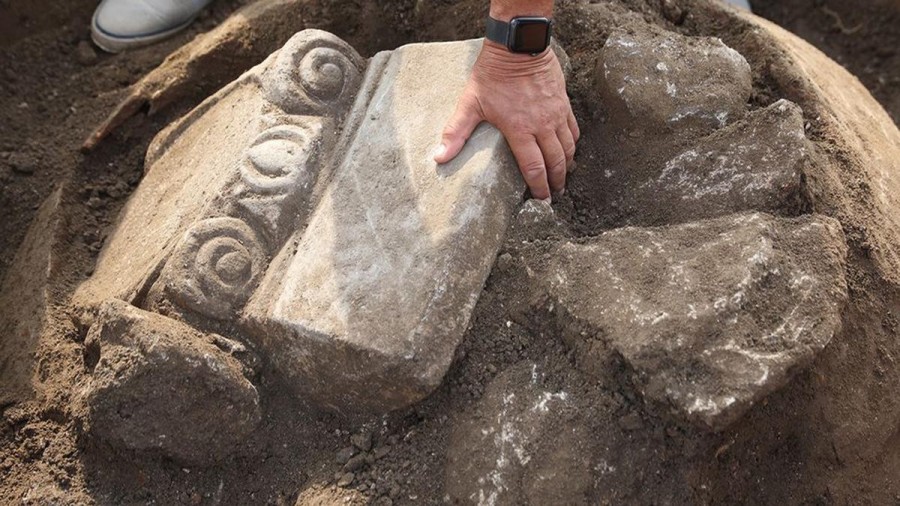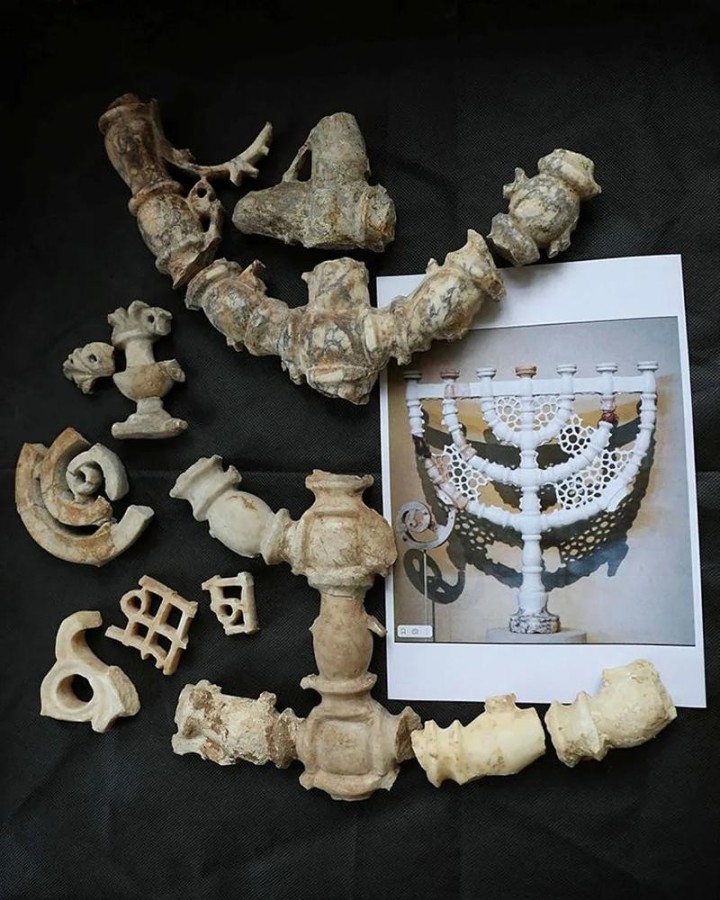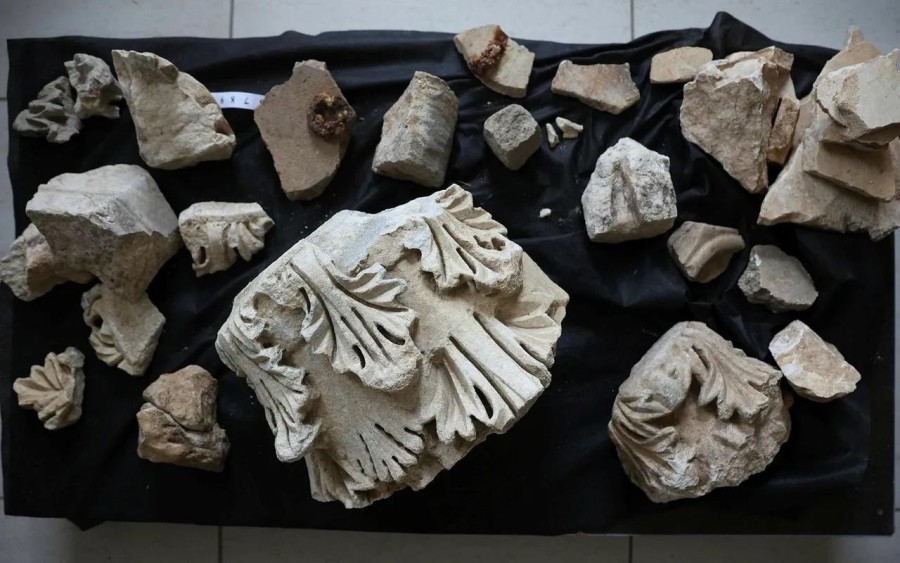Archaeologists uncover 2,000-year-old synagogue in the Black Sea region
A team of experts from the Phanagoria archaeological expedition has unveiled the remains of one of the world’s oldest synagogues within the historical boundaries of the ancient Greek city of Phanagoria, situated on Russia’s Taman Peninsula.

Credit: Volnoe Delo Foundation
Phanagoria, founded by Greek settlers on the Taman Gulf’s shores in the 6th century BCE, encapsulates an expansive settlement and necropolis encompassing 900 hectares and boasting more than 700 mounds.
This city played a pivotal role as a thriving trade hub, connecting the coastal regions of the Maeotian marshes to territories south of the Caucasus mountains.
The archaeological excavation, conducted under the auspices of the Oleg Deripaska Volnoe Delo Foundation, has uncovered remarkable remnants of the synagogue’s foundations, walls, and a treasure trove of artifacts, including exquisite marble menorahs, liturgy tables, and fragments of ornate marble steles.

The expedition, led by the Institute of Archaeology of the Russian Academy of Sciences, has been systematically excavating Phanagoria since 2004. Credit: Volnoe Delo Foundation
The synagogue’s origins trace back to the Second Temple Period (597 BCE to CE 70), a time of historical and religious significance, standing resolutely on the shores of the Black Sea for approximately five centuries. The synagogue’s existence was marred by the city’s eventual sacking and devastation at the hands of invading Huns.
Nevertheless, Phanagoria’s spirit endured, rebounding in the 7th century as the capital of Old Great Bulgaria and embracing a Byzantine affiliation.

Architecturally, the synagogue is an awe-inspiring rectangular structure measuring 21 meters in length and 6 meters in width, housing two chambers exceeding 60 square meters each. The interior, as deduced from architectural remnants, is believed to have showcased opulent marble columns, walls adorned with captivating paintings and tiles, and resplendent ornamental marble menorahs.
One of the crucial aspects of this discovery lies in the inscriptions found within the synagogue’s precincts. A stele fragment from the 5th century CE bears the Greek inscription “synagogue,” while other marble tablets, dating to 16 and 51 CE, bear inscriptions referring to a “house of prayer” and “synagogue,” respectively.
Fragments of a spectacular broken menorah from the Phanagoria synagogue and reconstruction of what it looked like. Credit: Vitaly Timkiv, Oleg Deripaska, Volnoe Delo Foundation
These artifacts stand as pivotal evidence, placing the Phanagoria synagogue among the world’s oldest, with its roots dating back to at least the early 1st century CE.

Historical records and depictions from the era accentuate the vibrant Jewish community’s presence within the city during the 1st century CE. Notably, amphorae and tombstones adorned with menorahs corroborate this assertion.
Archaeologists have found the fragments of columns and many of the architectural elements of the ancient building. Credit: Volnoe Delo Foundation
Furthermore, medieval historical accounts resonate with the notion that Jews formed a substantial segment of Phanagoria’s populace. Theophanes, an 8th-century Byzantine chronicler, and Ibn-Hordadbeha, a 9th-century Arabian geographer, both refer to Phanagoria as a “Jewish city.”
The expedition, led by the Institute of Archaeology of the Russian Academy of Sciences, has been systematically excavating Phanagoria since 2004, with support from the Oleg Deripaska Volnoe Delo Foundation. Comprising a team of 250 archaeologists, students, and volunteers, these excavations have spanned an impressive 7,000 square meters, unearthing the remnants of this ancient Greek city.

Reconstructing a part of the synagogue. The walls of the synagogue were decorated with marble tablets and paintings. Credit: Vitaly Timkiv @ Oleg Deripaska Volnoe Delo Foundation
The city’s historical significance remains preserved in treasures exhibited in esteemed institutions like the Hermitage, and the Pushkin State Museum of Fine Arts, as well as museums in the UK and Germany.
The expedition’s findings have resonated globally, with presentations at international scientific gatherings across multiple countries.
The newly revealed synagogue stands as an emblem of the intricate interplay of history, culture, and religion. This discovery offers insights into the religious and cultural dynamics that once flourished in the region.
Related Post
A shocking documentary proves that mermaids do exist
SHOCKING Revelation: Thuya, Mother of Queen Tiye, Was the Grandmother of Akhenaten and Tutankhamun—What Ancient Egyptian Secrets Did She Leave Behind?
Breaking News: Astonishing Discoveries at Karahan Tepe Confirm an Extraterrestrial Civilization is Hiding on Earth, and NO ONE Knows!
Breaking News: Researchers FINALLY Discover U.S. Navy Flight 19 After 75 Years Lost in the Bermuda Triangle!
NASA’s Secret Investigation: Uncovering the Astonishing Mystery of the UFO Crash on the Mountain!
Explosive UFO Docs LEAKED: Startling Proof That Aliens Ruled Ancient Egypt!